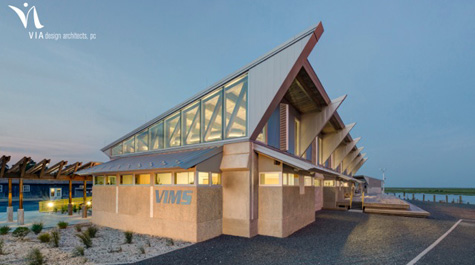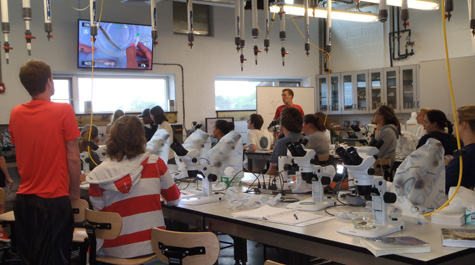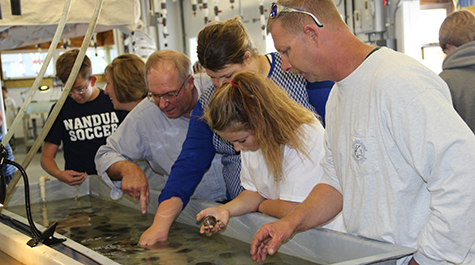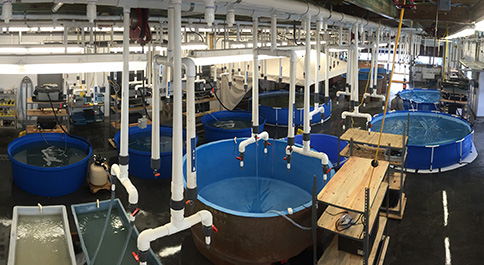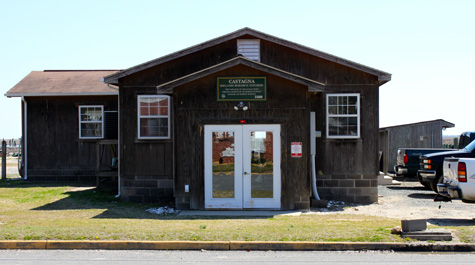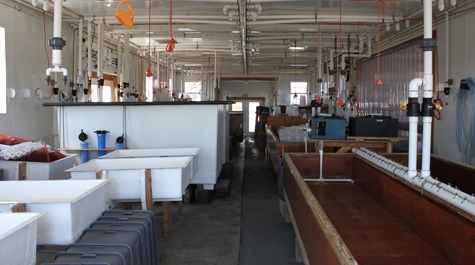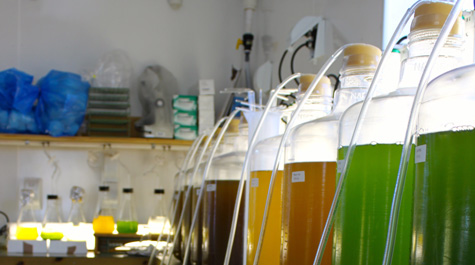Seawater Facilities
The Seawater Laboratory (SWL) features a large teaching lab as well as a flexible wet lab with tanks of various sizes to use in either flow-thru or recirculating modes. The SWL’s teaching lab provides bench space for 36 students and is equipped with common-use stereo and compound microscopes, standard lab ware and two image analysis systems. The SWL’s wet lab provides flexibility to accommodate multiple research needs and holding parameters that can be adjusted at the point-of-use.
The Castagna Shellfish Research Hatchery also features a flexible design. The hatchery offers the capability to culture bivalve larvae and micro-algae with various temperature, salinity, and filtration parameters.
Our campus also features outdoor flow-thru and recirculating holding systems that range in size from 2’W x 8’L x 7”D fiberglass raceways to a 20’ diameter x 5’D fiberglass tank.
Visitors wishing to use the ESL seawater facilities should contact the Seawater Laboratory Manager in advance to discuss space requests and resources needed to accomplish his or her project. If your project at ESL will involve the use of vertebrates, an approved IACUC protocol must be in place and posted prior to the start of your work. Educational field trips in which ESL staff will be responsible for collecting vertebrates are covered under our protocol. Additional information on animal care and use policies and the IACUC protocol approval process is available on the College of William & Mary’s Animal Subjects webpage.
For seawater facilities reservations, contact:
John Lewis[[v|jclewis]]
(757) 787-5814


